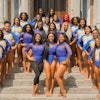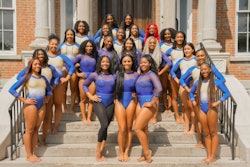ORLANDO, Fla.
The disparity between graduation rates for White and Black college football players in this season’s five major bowls was nearly twice as large as those for less successful schools, according to a study released Monday.
However, the analysis by the University of Central Florida showed classroom improvement, study author Richard Lapchick said. Eighty-six percent of the 64 bowl-bound teams graduated at least 50 percent of their players.
Sixty-two percent (40 schools) matched or beat the NCAA’s new Academic Progress Rate standard, which is intended to more accurately gauge grades and graduation rates. But the statistics are preliminary and don’t include the most recent school year, Lapchick said.
Perhaps most strikingly, White athletes in the Bowl Championship Series beat their counterparts among the 119 NCAA Division I-A schools by graduating 81 percent of the time, compared with 62 percent division-wide. The Black athlete graduation rate was 56 percent among those schools, also better than the 49 percent overall rate. But the discrepancy between White and Black players’ graduation rates for top bowl teams was nearly twice the 13-point NCAA average.
Unbeaten Ohio State was next-to-last in Black academics. The Buckeyes graduated 32 percent of Black players, better only than Georgia (24 percent) among the 64 bowl teams. Ohio State has an 80 percent overall graduation rate, and an 85 percent rate for White football players.
Lapchick said the racial disparity was a continued concern, but the NCAA’s new academic standards are already making a difference.
“I go to a lot of campuses to speak and I’m told on a regular basis that they’re recruiting very different student-athletes these days because they know they can’t afford the penalties,” Lapchick said. “A lot of schools that formerly took risks on student-athletes because they were so great athletically, they’re no longer recruiting those student-athletes.”
Boston College and Navy, which are meeting in the Meineke Car Care Bowl, had the best Academic Progress Rates of any bowl-bound programs (Navy with 986, BC with 982).
Seven of the eight Atlantic Coast Conference teams in bowls made Lapchick’s top 25 academically: Boston College, Clemson, Florida State, Georgia Tech, Maryland, Miami, Wake Forest. The lone exception was among ACC bowl teams Virginia Tech.
The APR was developed in 2004 and awards points based on how many scholarship athletes meet academic eligibility standards. A cutoff score of 925 means an estimated 50 percent of those athletes are on track to graduate. Twenty-four schools this year fell below that rate, and that will eventually lead to stiff penalties.
“As our reforms continue to take hold, we expect to see higher levels of improvement and achievement in the overall academic success of our student-athletes,” the NCAA said in a written statement. “This is critical, because very few of them will become professional athletes.”
Forty-eight schools graduated two-thirds or more of their White players, but just 18 met that mark for Black players. Twelve schools graduated less than 40 percent of their Black football players, while no program fell below that standard for White players.
Troy was the only bowl school that graduated more Black players than White (by 9 percentage points).
–Associated Press
© Copyright 2005 by DiverseEducation.com



















